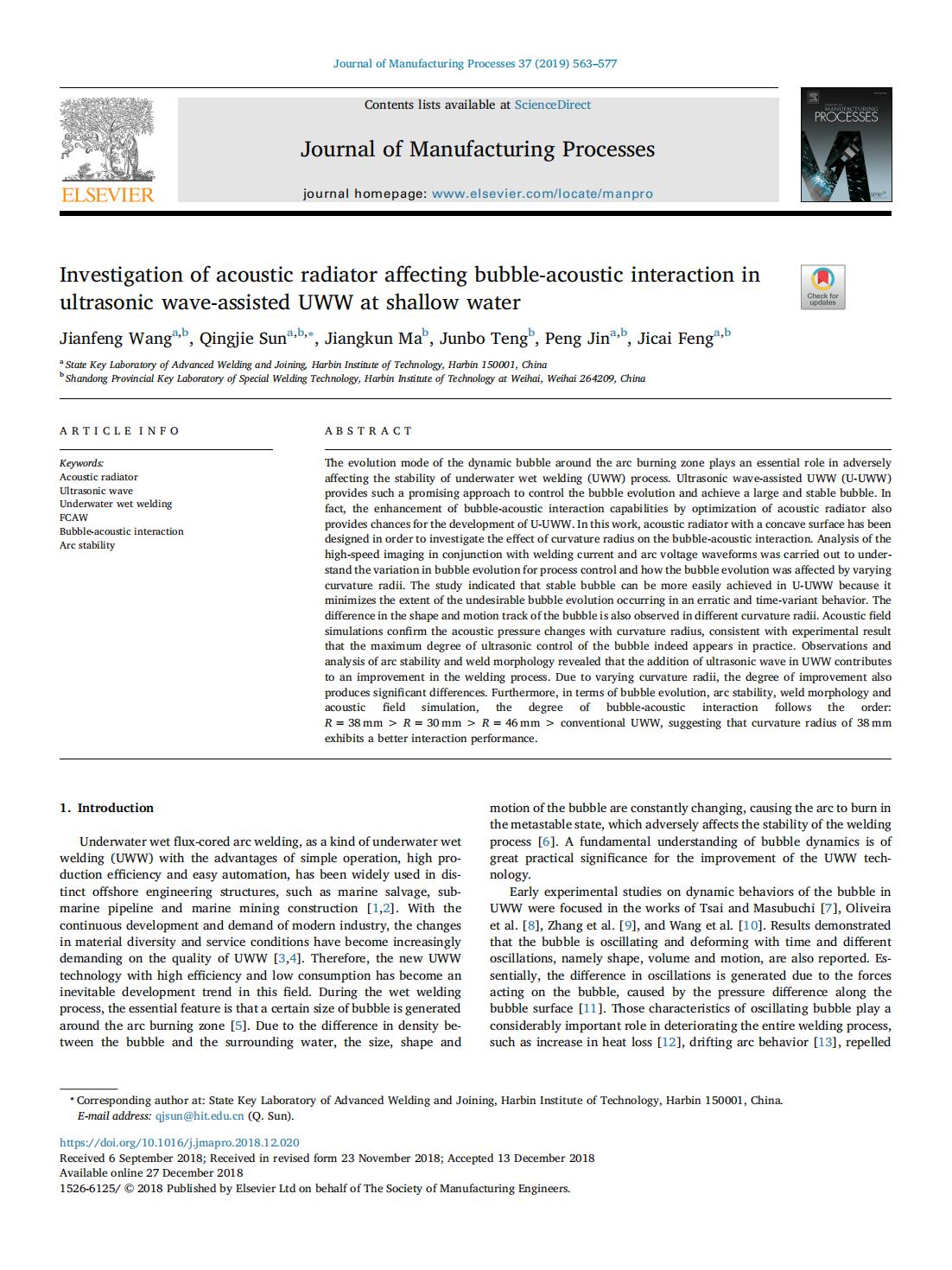The evolution mode of the dynamic bubble around the arc burning zone plays an essential role in adversely affecting the stability of underwater wet welding (UWW) process. Ultrasonic wave-assisted UWW (U-UWW) provides such a promising approach to control the bubble evolution and achieve a large and stable bubble. In fact, the enhancement of bubble-acoustic interaction capabilities by optimization of acoustic radiator also provides chances for the development of U-UWW. In this work, acoustic radiator with a concave surface has been designed in order to investigate the effect of curvature radius on the bubble-acoustic interaction. Analysis of the high-speed imaging in conjunction with welding current and arc voltage waveforms was carried out to understand the variation in bubble evolution for process control and how the bubble evolution was affected by varying curvature radii. The study indicated that stable bubble can be more easily achieved in U-UWW because it minimizes the extent of the undesirable bubble evolution occurring in an erratic and time-variant behavior. The difference in the shape and motion track of the bubble is also observed in different curvature radii. Acoustic field simulations confirm the acoustic pressure changes with curvature radius, consistent with experimental result that the maximum degree of ultrasonic control of the bubble indeed appears in practice. Observations and analysis of arc stability and weld morphology revealed that the addition of ultrasonic wave in UWW contributes to an improvement in the welding process. Due to varying curvature radii, the degree of improvement also produces significant differences. Furthermore, in terms of bubble evolution, arc stability, weld morphology and acoustic field simulation, the degree of bubble-acoustic interaction follows the order: R = 38 mm > R = 30 mm > R = 46 mm > conventional UWW, suggesting that curvature radius of 38 mm exhibits a better interaction performance.
